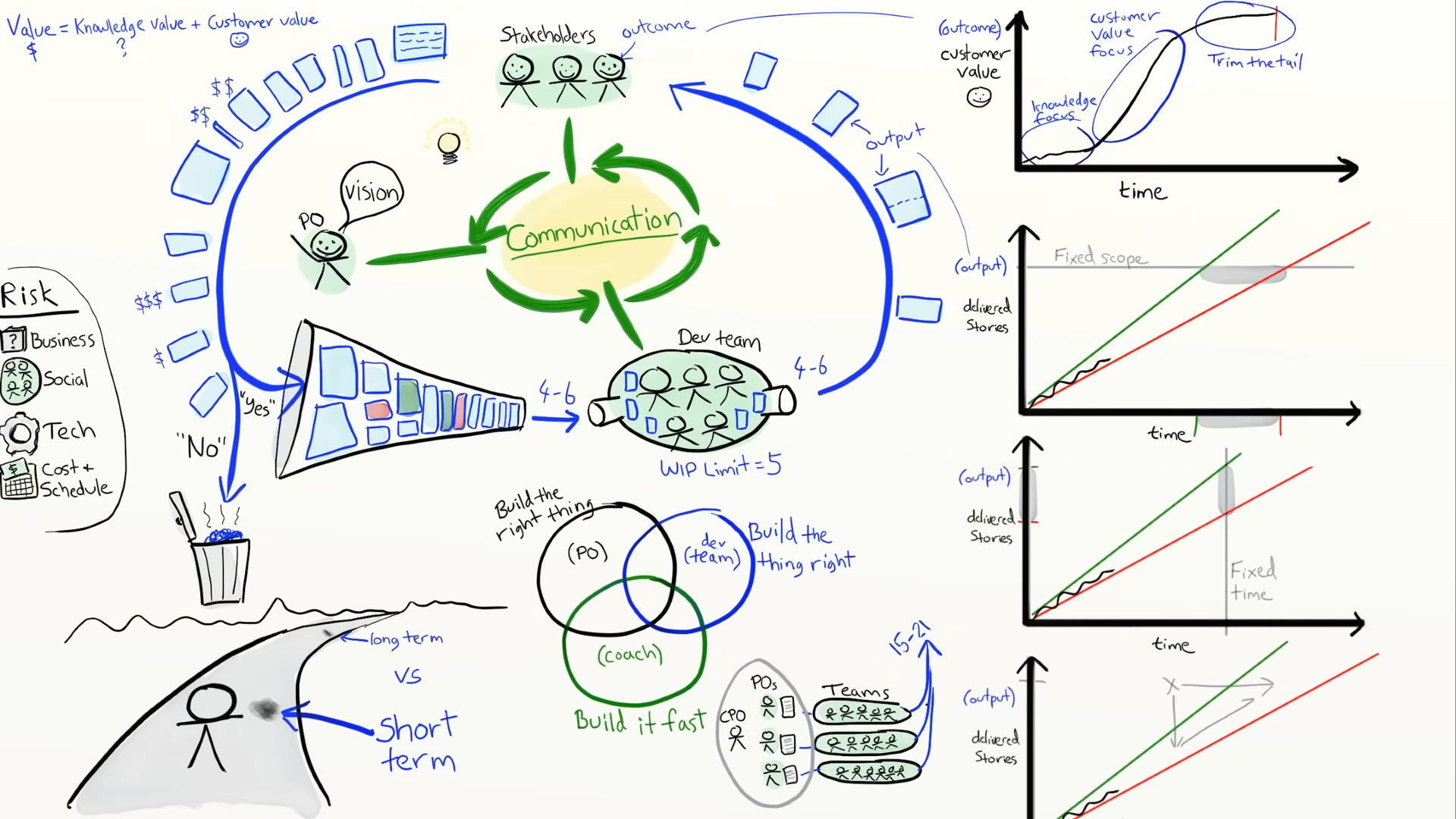Agile Software Development from the Product Owner's Perspective
 Satish Shrishail Mirji
Satish Shrishail MirjiAgile software development has revolutionized the way software is built, focusing on flexibility, collaboration, and customer satisfaction. At the heart of this methodology is the Product Owner (PO), a pivotal role that bridges the gap between stakeholders and the development team. This article explores the responsibilities, challenges, and best practices for a Product Owner in an Agile environment.

The Role of the Product Owner
The Product Owner is responsible for maximizing the value of the product resulting from the work of the development team. This involves a variety of tasks, including:
Defining the Product Vision: The PO must have a clear understanding of the product's goals and how it fits into the broader business strategy. This vision guides the development process and ensures that the team is aligned with the company's objectives.
Managing the Product Backlog: The PO is tasked with creating and maintaining the product backlog, a prioritized list of features, enhancements, and bug fixes. This involves writing user stories, defining acceptance criteria, and ensuring that the backlog is visible and transparent to all stakeholders.
Stakeholder Engagement: The PO acts as the primary point of contact for stakeholders, gathering requirements, feedback, and ensuring their needs are met. This requires excellent communication skills and the ability to balance competing interests.
Decision Making: The PO must make informed decisions about the product's direction, often under tight deadlines. This includes prioritizing backlog items, approving work completed by the development team, and making trade-offs between scope, time, and resources.
Challenges Faced by Product Owners
While the role of a Product Owner is crucial, it comes with its own set of challenges:
Balancing Stakeholder Needs: With multiple stakeholders involved, each with their own priorities, the PO must navigate conflicting demands and ensure that the most critical needs are addressed.
Maintaining a Clear Vision: In a fast-paced Agile environment, it's easy to lose sight of the long-term vision. The PO must constantly reinforce the product's goals and ensure that short-term decisions align with the overall strategy.
Time Management: Juggling various responsibilities, from backlog refinement to stakeholder meetings, can be overwhelming. Effective time management is essential to ensure that the PO can fulfill their duties without becoming a bottleneck.
Adapting to Change: Agile development is inherently flexible, which means that priorities can shift rapidly. The PO must be adaptable and ready to pivot when necessary, while still maintaining focus on the product vision.
Best Practices for Product Owners
To succeed in their role, Product Owners can adopt several best practices:
Regular Backlog Grooming: Continuously refining and prioritizing the backlog ensures that the development team always has a clear set of tasks to work on. This also helps in identifying and addressing any potential issues early on.
Effective Communication: Keeping open lines of communication with both the development team and stakeholders is crucial. Regular updates, feedback sessions, and clear documentation can help prevent misunderstandings and ensure alignment.
Empowerment and Trust: Trusting the development team to make technical decisions and empowering them to take ownership of their work can lead to better outcomes and a more motivated team.
Continuous Learning: The Agile landscape is constantly evolving, and the PO should stay informed about new practices, tools, and techniques. Attending workshops, reading industry literature, and networking with other POs can provide valuable insights.
Conclusion
The Product Owner plays a vital role in Agile software development, acting as the linchpin between stakeholders and the development team. By effectively managing the product backlog, maintaining a clear vision, and fostering strong communication, the PO can help deliver a product that meets customer needs and drives business success. Despite the challenges, the role offers a unique opportunity to shape the future of a product and make a significant impact on the organization.
Subscribe to my newsletter
Read articles from Satish Shrishail Mirji directly inside your inbox. Subscribe to the newsletter, and don't miss out.
Written by
